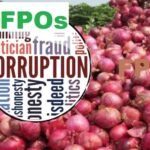Excessive & constant rains in Karnataka are likely to impact negatively on the coffee harvest.
Excessive and constant rains in recent weeks in Karnataka’s major producing districts would almost certainly have a negative influence on the emerging coffee harvest. Raising fears among coffee planters.
Excessive and constant rains in the first two weeks of July prompted problems such as root rot, leaf rot, and damp foot conditions, causing the leaves and berries on coffee trees to turn black and drop, according to farmers. This is causing crop losses, putting an end to producers’ hopes for a big season.
Also Read | Karnataka coffee regions start receiving pre-monsoon nicknamed ‘blossom showers’.
To date, the 2018 monsoon season has brought strong rainfall to key coffee-growing districts in Karnataka, which account for 70% of the country’s coffee output. Chikkamagalur had 132% more rainfall from June 1 to 17, while Hassan received 124% more and Kodagu, the top coffee-producing area, received 109% more.
The average rainfall in the South Kodagu area during the July 9-15 period was 272 percent more this year than the previous 10-year average. Some regions, such as Balele, had 349 percent more rainfall than the 10-year normal, while Gonikoppal and Virajpet received 310 and 288 percent more, respectively.
Collateral damages
‘Not only have the heavy and constant rains harmed the standing crop owing to black rot, stalk rot, and wet feed conditions, but planters have also experienced collateral damage from shade tree collapses caused by the strong winds.’ Flooding has occurred in certain regions, and planters have experienced losses as a result of water logging. While it is too early to estimate crop losses, they might be about 25% in Chikamagalur and 20% in Kodagu, according to N Ramanathan, Chairman of the Kodagu Planters Association (KPA).
The proportion of dropping is higher in certain places that have historically received more precipitation. Coffee Board officials stated that they are analyzing the impact of the excessive rainfall and have been advising producers on how to handle premature berry drop and black rot/stalk rot illnesses in the root zones of the plants.
According to Jeffry Rebello, vice-president of the United Planters’ Association of Southern India (UPASI), the situation is fluid because it is still the first part of the monsoon season and too early to quantify crop losses. ‘If there are further episodes of severe rains, there might be more effective,’ Rebello added, estimating current losses at roughly 15%.
Also Read | Heavy rains in coffee-producing states are expected to reduce crop size by 10%.
Other plantation crops, including cardamom and pepper, have experienced losses, according to B S Jayaram, a coffee planter in Mudigere. ‘We have requested that the district authorities survey agricultural losses in order to quantify the damage,’ said Jayaram, past president of the Karnataka Growers Federation.
In its latest post-blossom or early estimations, the State-run Coffee Board put the crop size for the year 2022-23, which begins in October, at a record 3.93 lakh tonnes, 15% more than the previous year’s 3.42 lakh tonnes.


















Add Comment